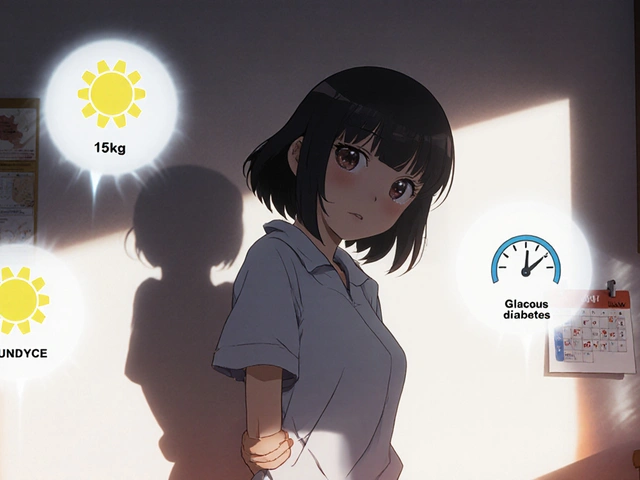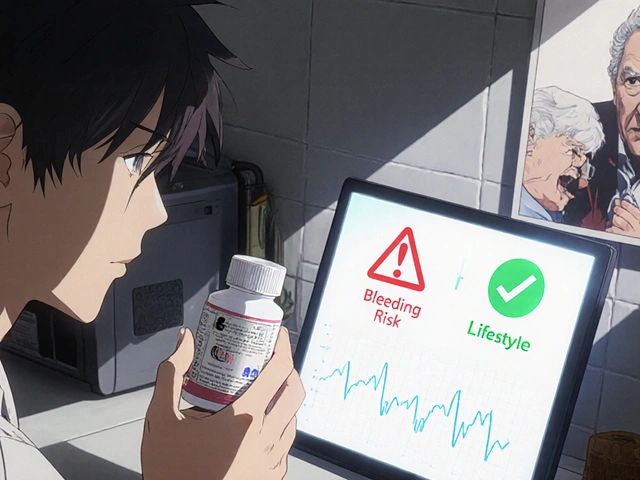Vitamin deficiency in children is a micronutrient shortage that impairs growth, immune function, and cognitive development, affecting millions of kids worldwide despite abundant food supplies.
Why the Problem Often Stays Hidden
Parents usually spot obvious signs like fatigue or bruising, but many deficiencies manifest subtly-slower school performance, mild bone pain, or frequent colds. Because symptoms overlap with common childhood illnesses, doctors may miss the underlying nutritional gap. A 2023 WHO report estimated that 30% of school‑aged children in low‑ and middle‑income regions have at least one micronutrient deficiency, yet only half receive a proper diagnosis.
Key Vitamins and Their Specific Threats
Not all vitamins carry the same risk profile. Below are the five nutrients most linked to serious health outcomes when children lack them.
| Vitamin | Primary Function | Deficiency Disease | Typical RDA (mg or µg) | Common Food Sources |
|---|---|---|---|---|
| Vitamin A | Supports vision and immune health | Night‑blindness, increased infection risk | 300µg | Carrots, sweet potatoes, fortified milk |
| Vitamin D | Regulates calcium absorption, bone mineralisation | Rickets, weakened immunity | 15µg | Sun‑exposed skin, oily fish, fortified cereal |
| Vitamin B12 | Red blood cell formation, nerve function | Macrocytic anemia, developmental delays | 1.2µg | Meat, eggs, fortified soy drinks |
| Iron | Oxygen transport, energy metabolism | Iron‑deficiency anemia, reduced attention span | 10mg | Red meat, lentils, iron‑fortified breads |
| Calcium | Bone strength, muscle contraction | Osteopenia, delayed growth | 1,000mg | Dairy, tofu, leafy greens |
How Deficiencies Impact the Body
Each micronutrient plays a distinct role, yet they often interact. For example, without enough Vitamin D, the gut can’t absorb Calcium efficiently, leading to rickets-a softening of bones that makes kids bow‑legged and more prone to fractures.
Vitamin A deficiency reduces the production of mucosal antibodies, leaving children vulnerable to respiratory infections. In a 2022 Australian cohort study, children with low serum retinol were 40% more likely to be hospitalized for pneumonia.
Iron deficiency is the leading cause of preventable cognitive impairment. A longitudinal trial showed that school children who received iron supplements improved reading scores by 12% compared to peers.
Vitamin B12 deficiency, though rarer in high‑income countries, can arise in vegans or children with malabsorption. Early signs include lethargy and delayed language milestones, often mistaken for behavioral issues.
Risk Factors Parents Should Watch
- Limited exposure to sunlight, especially in winter months, reduces natural Vitamin D synthesis.
- Highly processed diets low in fruits, vegetables, and dairy cut off sources of Vitamin A, calcium, and iron.
- Exclusive breastfeeding beyond six months without proper supplementation can leave gaps, particularly for Vitamin D.
- Socio‑economic constraints that limit access to fortified foods or quality protein.
- Medical conditions like celiac disease or inflammatory bowel disease that impair nutrient absorption.
Screening and Diagnosis
Regular check‑ups with a pediatrician are the frontline defence. Blood tests measuring serum levels of Vitamin D, ferritin (iron), and retinol‑binding protein help flag hidden gaps. The Australian NHMRC recommends screening children at risk for Vitamin D deficiency during winter.
Beyond labs, simple questionnaires about diet diversity, sunlight exposure, and supplement use can guide clinicians toward targeted testing.

Prevention Strategies That Really Work
Prevention is a three‑pronged approach: diet, supplementation, and public‑policy measures.
- Balanced meals: Include a colourful plate-orange carrots (Vitamin A), leafy greens (Calcium), beans (Iron), and dairy or fortified alternatives.
- Smart supplementation: For kids with limited sun or dietary restrictions, a daily chewable with 400IU Vitamin D and 10µg Vitamin A is often enough. Always follow a pediatrician's dosage recommendations.
- Food fortification: Government‑backed programs add Vitamin D to milk, Vitamin A to flour, and iron to breakfast cereals. These initiatives have reduced rickets rates by 70% in Australian Indigenous communities over the past decade.
School‑based nutrition programs also play a role. When schools serve fortified milk and whole‑grain breads, children get a reliable nutrient boost during the day.
When to Seek Professional Help
If your child shows any of these red flags, book an appointment promptly:
- Persistent bone or joint pain, especially after a minor fall.
- Frequent colds, ear infections, or prolonged diarrhoea.
- Noticeable decline in school performance or concentration.
- Pale skin, unusual fatigue, or rapid heart rate.
- Delayed speech or motor milestones.
Early intervention can reverse most deficiency‑related issues within weeks of appropriate treatment.
Long‑Term Outlook
Correcting a micronutrient gap during childhood often restores normal growth trajectories. Children who received timely Vitamin D therapy catch up in height within 12‑18 months. Likewise, iron repletion improves attention spans, reducing the need for special education services.
Conversely, chronic deficiencies can set the stage for adult diseases such as osteoporosis, cardiovascular problems, and neurodegenerative disorders. Investing in proper nutrition now pays health dividends decades later.
Key Take‑aways
- Vitamin deficiency in children can be silent but harmful.
- Vitamin D, A, B12, iron, and calcium are the top culprits.
- Risk rises with limited sun, processed diets, and certain medical conditions.
- Screening, balanced meals, targeted supplements, and fortification are effective safeguards.
- Watch for subtle signs and act early to protect your child’s future.
Frequently Asked Questions
How can I tell if my child lacks Vitamin D?
Look for bone pain, muscle weakness, or frequent infections. A simple blood test for 25‑hydroxyvitamin D will confirm the level. Even without symptoms, children with limited outdoor time should be screened during winter.
Are multivitamin gummies safe for kids?
Gummies can be convenient, but they often contain added sugars and may not provide the full RDA. Choose a product certified by a national health authority and stick to the dosage advised by a pediatrician.
Can a vegetarian diet cause Vitamin B12 deficiency?
Yes, because B12 is primarily found in animal foods. Vegetarian children should consume fortified cereals or soy drinks, or take a B12 supplement under medical supervision.
What role does food fortification play in preventing deficiencies?
Fortification adds essential vitamins and minerals to staple foods, reaching families who might not afford supplements. In Australia, fortified milk and flour have cut rickets and iron‑deficiency rates dramatically.
Should I give my child a daily Vitamin A supplement?
Only if a healthcare professional identifies a deficiency. Excess Vitamin A can be toxic, especially in young kids. Aim for food sources first, then supplement if needed.






Louis Robert
September 27, 2025 AT 02:30Great overview of the hidden risks; parents should definitely keep an eye on these nutrients.
Nick Ham
September 27, 2025 AT 04:26The article delineates micronutrient deficits without addressing the bioavailability matrix in pediatric diets.
Jennifer Grant
September 27, 2025 AT 06:40It is astonishing how often we neglect the subtle cues of a child's body, allowing deficiencies to fester in silence.
When a youngster struggles to concentrate, we might attribute it solely to lack of sleep rather than a hidden iron shortfall.
Similarly, frequent colds could be a sign of insufficient vitamin A rather than just an unlucky season.
The interdependence of nutrients, such as vitamin D facilitating calcium absorption, underscores the complexity of nutrition.
Parents who rely exclusively on processed foods may unwittingly starve their kids of essential micronutrients.
Even well‑intentioned vegans must plan for vitamin B12, lest developmental milestones slip.
Screening programs, while valuable, often miss subclinical cases that only manifest as minor academic setbacks.
Iron deficiency alone has been linked to a measurable dip in reading scores, a fact that should alarm educators.
In low‑income regions, fortified staples have reduced rickets by staggering margins, yet such successes are unevenly distributed.
The article rightly calls for balanced meals, but the reality of grocery budgets can be a stark barrier.
Supplementation should never replace a diverse diet, but it can bridge gaps when sunlight exposure is limited.
Clinical guidelines now advocate for winter‑time vitamin D testing in at‑risk populations.
Nevertheless, some physicians still dismiss parental concerns, attributing them to over‑parenting.
We must empower caregivers with actionable information, not just statistics.
Only through collaborative effort-parents, schools, and policymakers-can we eradicate these silent threats.
Ben Muncie
September 27, 2025 AT 08:53It is irresponsible to ignore proven nutritional guidelines.
kevin tarp
September 27, 2025 AT 11:06I appreciate the clear layout, but I’d add that regular pediatric blood panels simplify early detection.
christian quituisaca
September 27, 2025 AT 13:20Wow, this post packs a punch!
By sprinkling vibrant food choices like orange carrots, leafy kale, and fortified cereals, families can turn a bland menu into a nutrient‑rich feast.
The blend of diet, supplements, and policy feels like a triple‑threat defense against hidden deficiencies.
Keep spreading the word!
Donnella Creppel
September 27, 2025 AT 15:33Really?? I must say, your enthusiasm-while *admirable*-seems a tad over‑the‑top; perhaps tone it down a notch, yeah??
Jarod Wooden
September 27, 2025 AT 17:46Your treatise, albeit verbose, overlooks the mechanistic pathway of vitamin D–mediated calcium homeostasis.
lee charlie
September 27, 2025 AT 20:00Reading this gives me hope that more kids will get the nutrients they need to thrive.
Greg DiMedio
September 27, 2025 AT 22:13Sure, because a gummy can fix everything.
Badal Patel
September 28, 2025 AT 00:26Permit me to expound upon the gravitas of micronutrient fortification; it is, without hyperbole, the cornerstone of public health triumphs across epochs.
KIRAN nadarla
September 28, 2025 AT 02:40While your prose drips with melodrama, the data you cite lack statistical significance, rendering the argument tenuous.
Kara Guilbert
September 28, 2025 AT 04:53We have a duty to ensure no child suffers from easy preventable deficiences.